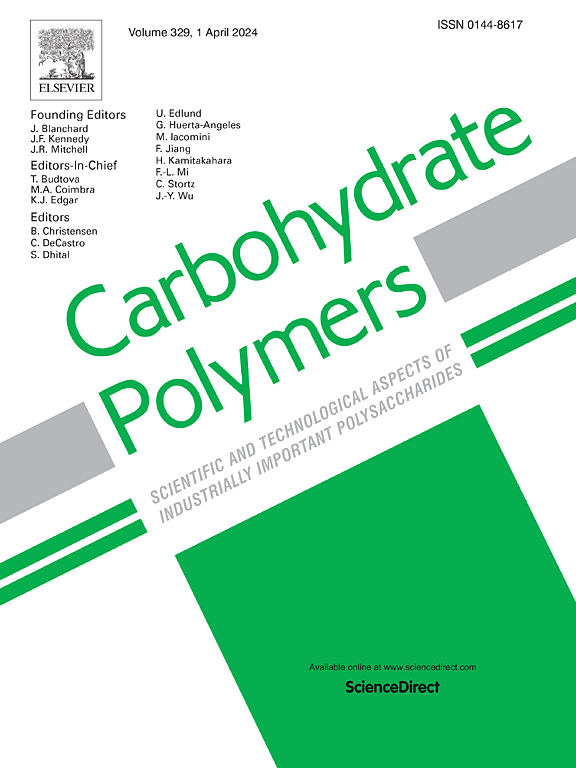Tracking phase transitions of tactoids in sulfated cellulose nanocrystals using second harmonic generation microscopy
IF 10.7
1区 化学
Q1 CHEMISTRY, APPLIED
引用次数: 0
Abstract
Cellulose nanocrystals (CNCs) have emerged as promising candidates for chiroptical functional materials due to their ability to form cholesteric liquid crystals with tunable periodicity. The quality of the final cholesteric phase is influenced by the nucleation, growth and coalescence mechanism of the initial droplets, known as tactoids. Current research focuses on understanding the size and morphological transformations of these tactoids, to gain deeper insights into their dynamic behavior and, in turn, to better control the final properties of novel photonic materials. For theoretical models to effectively describe these transitions, precise measurement of these geometric quantities is critical. While polarized microscopy is commonly used, it struggles to accurately measure volumes and aspect ratios. Here, we demonstrate how second-harmonic generation (SHG) microscopy can be used to visualize tactoids with unprecedented detail, offering three-dimensional representations of their size, morphology, and fusion processes in a single volumetric scan. Additionally, the fully cholesteric phase of the suspension can be imaged with SHG to identify potential defects and correlate them with the fusion process of tactoids; specifically, with how the tactoids fuse and merge along the chiral axis, thus linking early tactoid events to the overall quality of the final cholesteric phase.

利用二次谐波发生显微镜跟踪硫酸盐纤维素纳米晶体中微球的相变
纤维素纳米晶体(CNCs)由于能够形成具有可调周期性的胆甾液晶而成为热学功能材料的有希望的候选者。最终胆甾相的质量受到初始液滴的成核、生长和聚结机制的影响,这些液滴被称为小液滴。目前的研究重点是了解这些小突的大小和形态变化,以更深入地了解它们的动态行为,从而更好地控制新型光子材料的最终特性。为了使理论模型有效地描述这些转变,精确测量这些几何量是至关重要的。虽然偏光显微镜是常用的,但它很难准确地测量体积和纵横比。在这里,我们展示了如何使用二次谐波生成(SHG)显微镜以前所未有的细节可视化tactoids,在单个体积扫描中提供其尺寸,形态和融合过程的三维表示。此外,可以用SHG对悬浮液的全胆甾相进行成像,以识别潜在的缺陷,并将其与附着体的融合过程联系起来;具体来说,是指突状体如何沿着手性轴融合和合并,从而将早期突状体事件与最终胆固醇期的整体质量联系起来。
本文章由计算机程序翻译,如有差异,请以英文原文为准。
求助全文
约1分钟内获得全文
求助全文
来源期刊

Carbohydrate Polymers
化学-高分子科学
CiteScore
22.40
自引率
8.00%
发文量
1286
审稿时长
47 days
期刊介绍:
Carbohydrate Polymers stands as a prominent journal in the glycoscience field, dedicated to exploring and harnessing the potential of polysaccharides with applications spanning bioenergy, bioplastics, biomaterials, biorefining, chemistry, drug delivery, food, health, nanotechnology, packaging, paper, pharmaceuticals, medicine, oil recovery, textiles, tissue engineering, wood, and various aspects of glycoscience.
The journal emphasizes the central role of well-characterized carbohydrate polymers, highlighting their significance as the primary focus rather than a peripheral topic. Each paper must prominently feature at least one named carbohydrate polymer, evident in both citation and title, with a commitment to innovative research that advances scientific knowledge.
 求助内容:
求助内容: 应助结果提醒方式:
应助结果提醒方式:


